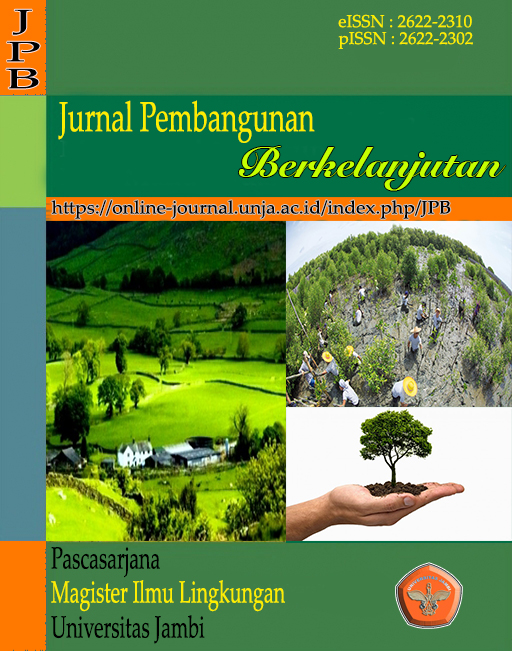Study of Waste Management in Jambi City
DOI:
https://doi.org/10.22437/jpb.v4i2.18948Keywords:
Management, Garbage, JambiAbstract
Research was conducted in Jambi City from August 7 to September 27 2016. While the reason of choosing location of research was because the Department of Gardening and Cemetery Cleaning Jambi City is a government agency in the City of Jambi which deal with cleanliness issues that include the waste management in the city of Jambi. This research was analyzed by using Analytical Hierarchy Process (AHP) approach. The AHP was used to analyze waste management alternatives based on social, economic, environmental and technological aspects. The research used interview technique and questionnaire. From the research result showed that garbage fleet capability was not optimal yet. Rotational trucking using the current Arm Roll Truck was 6 rit / day, which this value had exceeded the limits of a 4-rit / day / truckload capability. Meanwhile, garbage trucking by using Dump Truck and Typer truck could still be upgraded again to 3 trips per day. Ability to transport the existing waste was also affected by the condition and age of the vehicle. The location of TPS placement or strategic container was on the land belonging to the Municipal Government, somewhat away from the settlements, could be traveled by the trucking vehicle and trash could not be more than one day (24 hours). Meanwhile, the effort of garbage solving doing by the appropriate institution in garbage management got varied result from less good until good enough.
Downloads
Downloads
Published
How to Cite
Issue
Section
License
Copyright (c) 2022 Jurnal Pembangunan Berkelanjutan

This work is licensed under a Creative Commons Attribution 4.0 International License.
1. Authors retain copyright and grant the journal right of first publication with the work simultaneously licensed under a Creative Commons Attribution 4.0 International License that allows others to share the work with an acknowledgement of the work's authorship and initial publication in this journal.
2. Authors are able to enter into separate, additional contractual arrangements for the non-exclusive distribution of the journal's published version of the work (e.g., post it to an institutional repository or publish it in a book), with an acknowledgement of its initial publication in this journal.
3. Authors are permitted and encouraged to post their work online (e.g., in institutional repositories or on their website) prior to and during the submission process, as it can lead to productive exchanges, as well as earlier and greater citation of published work (The Effect of Open Access)











